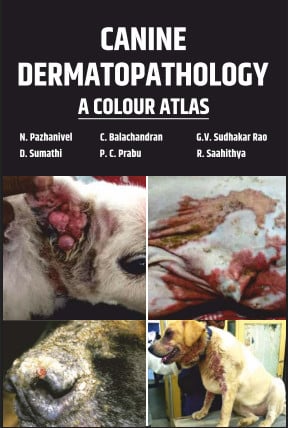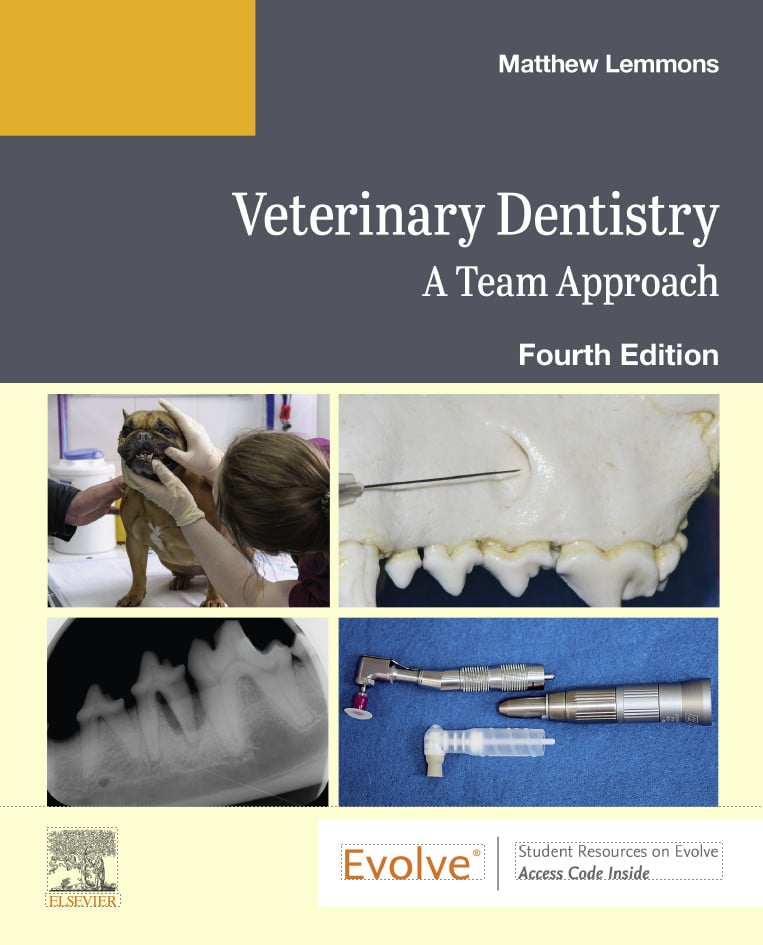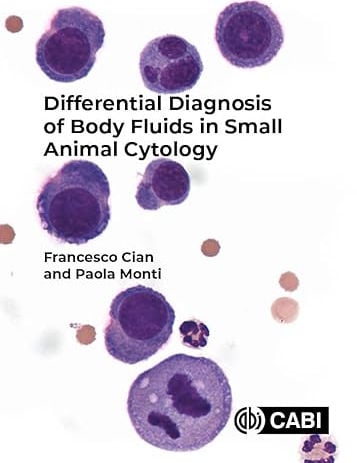
By N. Pazhanivel, C. Balachandran, Ganne Venkata Sudhakar Rao, D. Sumathi, P. C. Prabu, and R. Saahithya
Canine Dermatopathology: A Colour Atlas recognizes the complexity of dermatological cases and emphasizes the importance of a structured diagnostic approach. In addition to addressing common health problems in pet animals, particularly dogs, the book explores a myriad of aetiologies, including ecto/endoparasitic infestations, contact allergens, physical causes, radiation, infectious causes (bacterial, viral, fungal infections), immunological causes, nutritional/metabolic disorders, and endocrine imbalances. It also emphasizes the prevalence of secondary infections and guides veterinarians in successfully managing dermatological cases.
Canine Dermatopathology: A Colour Atlas highlights the significance of specific tests, such as skin scrapings, fungal and bacterial culture, cytological evaluation, and skin biopsy. Cytology emerges as a highly efficient and valuable examination that facilitates rapid lesion evaluation and guides subsequent diagnostic steps. Histopathology, when coupled with clinical findings, leads to definitive diagnoses, especially in cases involving neoplastic nodules or conditions with poor responses to previous therapy.
With a focus on cytology, gross morphology, histopathology, and immunohistochemistry, the book equips veterinarians with the knowledge needed for accurate and early diagnosis and treatment of various skin conditions in dogs. It serves as both a ready reckoner and an educational tool for the readers.

Table of Contents
1. Acral Lick Dermatitis (Lick Granuloma)
2. Atopic Dermatitis
3. Superficial Pyoderma
4. Superficial Pustular Dermatitis
5. Bacterial Granulomatous Dermatitis (Bacterial Granuloma)
6. Mycobacterial Granuloma
7. Hookworm Dermatitis
8. Flea Bite Hypersensitivity (Canine Flea Allergic Dermatitis)
9. Pemphigus Foliaceus
10. Dysplastic Diseases of Adnexae
11. Demodicosis (Demodectic Mange)
12. Crust and Scales
13. Ulcers
14. Dermatophytosis
15. Cheyletiellosis (Cheyletiella Dermatitis)
16. Hair Cycle Disorders of Endocrine Origin
17. Canine Zinc Responsive Dermatosis
18. Acanthosis Nigricans
19. Eosinophilic Granuloma (Canine Collagenolytic Granuloma)
20. Sertoli Cell Tumor Associated Skin Disease
21. Malassezia Dermatitis
22. Papilloma
23. Squamous Cell Carcinoma
24. Basal Cell Carcinoma (Trichoblastoma)
25. Sweat Gland Adenoma and Adenocarcinoma
26. Sebaceous Gland Adenoma and Adenocarcinoma
27. Ceruminous Gland Adenoma and Adenocarcinoma
28. Perianal Gland Adenoma and Adenocarcinoma
29. Fibroma
30. Fibrosarcoma
31. Lipoma
32. Liposarcoma
33. Haemangioma
34. Haemangiosarcoma
35. Hemangiopericytoma
36. Mast Cell Tumor
37. Histiocytoma
38. Cutaneous Lymphoma (Mycosis Fungoides, Epitheliotropic T-Cell Lymphoma)
39. Cutaneous Plasmacytoma
40. Melanoma
41. Transmissible Venereal Tumor (Sticker Tumor, Canine Venereal Granuloma)
Get This Book – Instant Download


































![Ettinger’s Textbook of Veterinary Internal Medicine 9th Edition [PDF+Videos] Ettinger’s Textbook of Veterinary Internal Medicine 9th Edition [True PDF+Videos]](https://www.vet-ebooks.com/wp-content/uploads/2024/10/ettingers-textbook-of-veterinary-internal-medicine-9th-edition-100x70.jpg)





